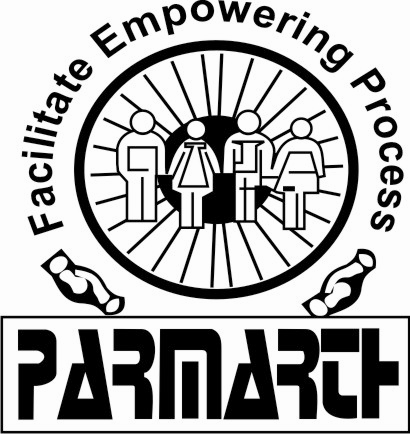Parmarth and Welthungerhilfe began working together since 2011 in the central part of India. How do you view the cooperation between the two?
The two year journey that Parmarth and Welthungerhilfe have experienced together has been one of close partnership and support. I have never felt that Welthungerhilfe is a typical donor instead it’s been a relationship of equals. The issue based support that Parmarth has received from Welthungerhilfe has been tremendous. The understanding is that the two organisations are working hand-in-hand on an issue of major concern in the region.
Parmarth has a strong rights based approach in its implementation of projects and the South Asia
Regional office also works with the same approach. How do you think this has impacted the community?
Parmarth has always believed in the rights based approach; something which is reflected even in the organisation’s vision and mission statement. In India the climate and situation is such that the only way forward is through empowering the people to demand their rights and entitlements. The rights based approach also ensures greater sustainability of the development work. The community has also shown a greater interest and enthusiasm in the continuity of he project when implemented through a rights based approach.
Why is the issue of water conservation so relevant to Parmarth?
The Bundelkhand region, where Parmarth works, faces an acute problem of water scarcity. The issue of water rights and conservation is connected with the socioeconomic inequities of a household. The exclusion of the vulnerable population from mainstream development processes can only be addressed through the issue of water conservation.
Can you describe the Integrated Water Resources Management project that Welthungerhilfe and Parmath have been implementing together?
The USP of the IWRM project is its integrated approach towards a) revival of the traditional water sources such as the Chandela tanks, b) water harvesting and c) water rights. It is also important to note that the project also integrates thematic sectors of agriculture and sanitation thus taking a much more holistic view of the issue.
Can you think of one such initiative under the project which you find is extraordinary and has made a difference in the community?
I think for me it is the revival of the Chandela tanks which has resulted in community mobilisation as well as development. The community now believes in the work that the organisation has been carrying out in the region.
What has been accomplished to fulfil Parmarth’s vision and what more needs to be done?
The community is economically weak. There is a strong feudal divide along the caste and gender lines. The people are de-motivated most of the time and do not believe in the governance system. In such a scenario I think Parmarth has addressed around 40 percent of what they had set out to achieve. We still need to put sustained efforts into empowering communities and make the initiatives people driven.

Note: Chandela Tanks – these tanks were constructed by stopping the flow of water in rivulets flowing between hills by erecting massive earthen embankments.




